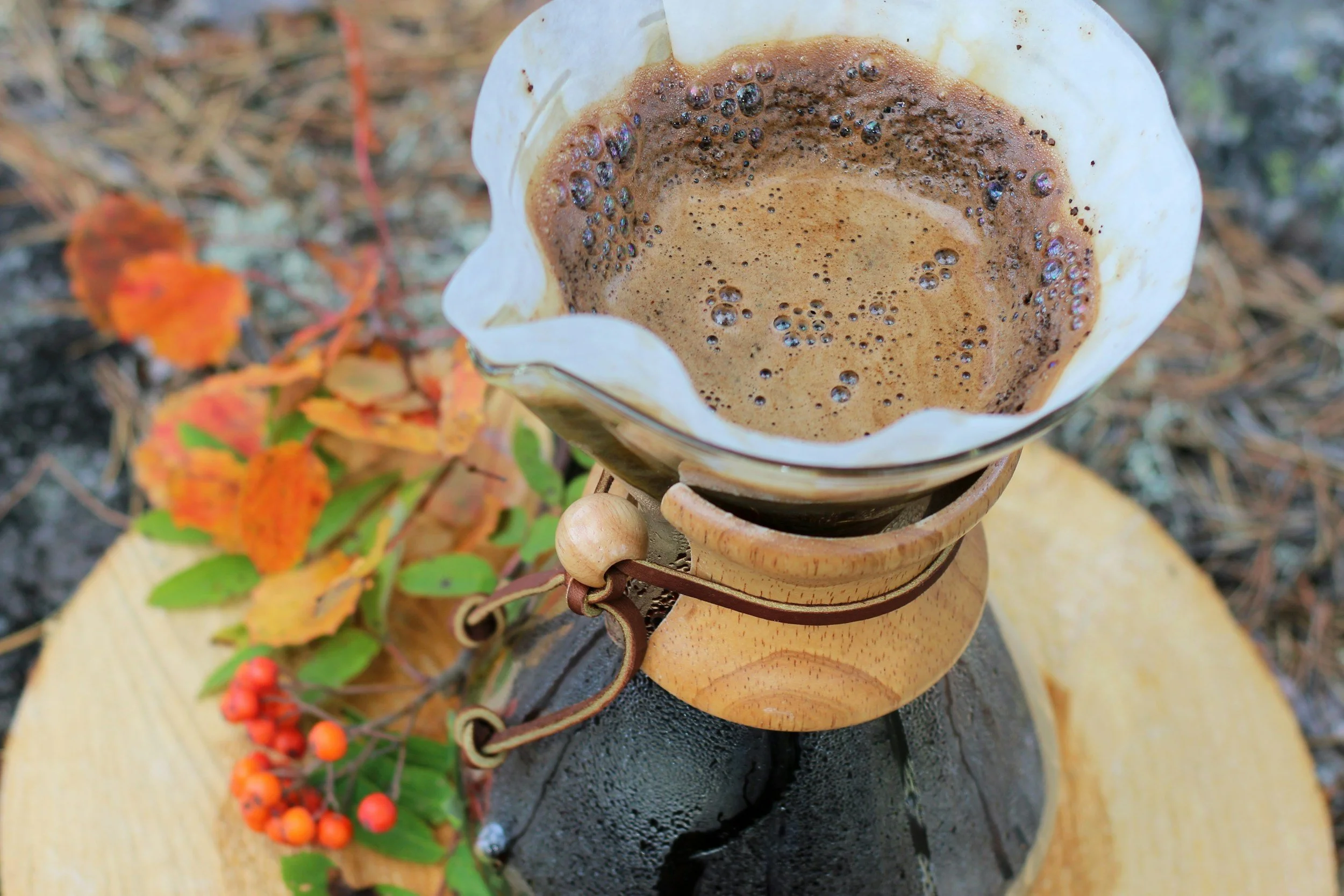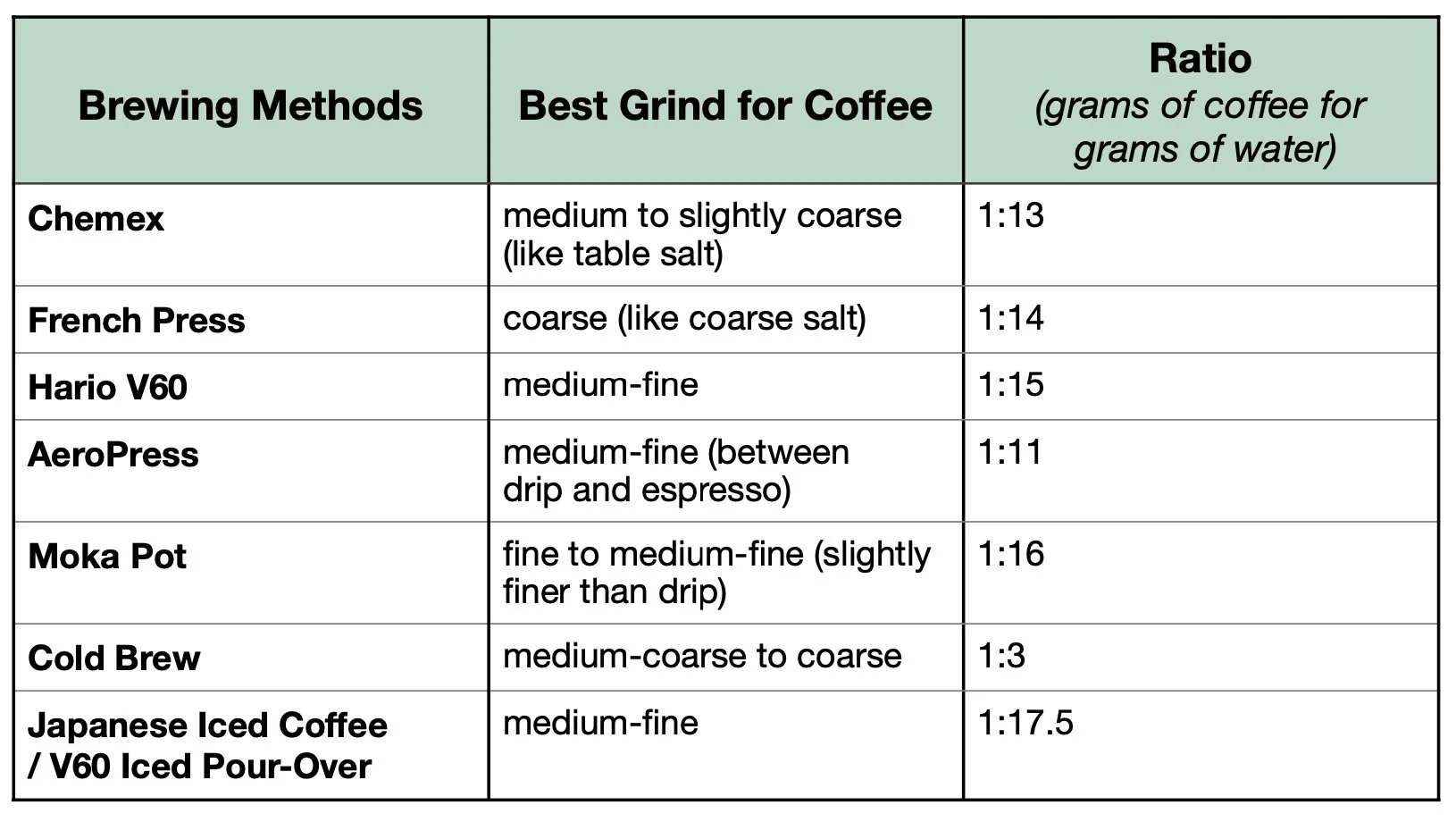How to Brew: Exploring Popular Coffee Brewing Methods
Why Do Brewing Methods Matter?
Your favorite coffee isn’t always about the beans - it’s also about the brewing methods! Brewing methods influence everything from aroma and body to acidity and sweetness.
The best part about all of this is that there’s no “right” way to brew your coffee every time. Different methods can extract various amounts and types of compounds from coffee beans, which influence the taste of the final cup. Variables like water temperature, brew time, and grind size all impact how coffee flavors develop during extraction.
That’s where all the fun begins. Exploring and experimenting with different brewing methods - whether it’s the boldness of a french press or the clarity of a pour-over - lets you discover what you love most about your cup of coffee. Every method offers a new way to experience coffee.
Ready to find your favorite cup? Let’s get brewing.
In this guide, we’ll explain a step-by-step process about coffee basics and steps involved in some of the popular coffee brewing methods.
What Is the Difference Between Pour Over and Drip Coffee?
Pour over coffee is a manual brewing method where hot water is slowly poured over coffee grounds in a filter, allowing the water to pass through and extract the coffee’s flavors. This hands-on technique gives the brewer precise control over the water temperatures, pouring speed, and grind size, which results in a customized and flavorful cup of coffee.
Unlike drip coffee, which typically relies on an automatic machine, pour-over coffee emphasizes craftsmanship and flavor. While drip coffee offers convenience and consistency, it often sacrifices the control that pour-over provides, making it less ideal for highlighting the complexity of high-quality beans.
Pour Over Coffee Methods
General Equipment Needed for any Pour-Over Coffee Recipe:
Pour Over or Immersion Brewer:
Chemex, French Press
Hario V60, Aeropress
Moka Pot, etc.
Paper Filters - specific to brewer type: The purpose of filters are to collect fine particles and oils, which affect flavor clarity and overall flavor notes
Gooseneck Kettle: Allows more precise pouring control for even extraction and often used with a built-in thermometer or interchangeable temperature setting
Coffee Grinder:
Burr grinder (manual or electric) recommended for specific grind size
Grind size is important depending on brewing method (usually medium-fine to medium)
Digital Scale and Timer:
Measures coffee and water accurately and helps maintain proper brew ratio
Timer may be built into scale or used separately - tracks pour intervals and total brew time
Fresh Coffee Beans and Filtered Water:
You should use freshly roasted, whole coffee beans - stored in an airtight container away from light and heat
Water should be clean of any chlorine or heavy metals - water quality significantly affects the taste of the final cup
But wait, does where you buy your beans and coffee grind size matter?
The answer is yes!
Geography has a huge influence on coffee flavors due to microclimates, terrain, altitudes, and more. Harvesting and processing techniques also influence the final coffee product. When harvesting, it’s very important for coffee producers to select only the ripest beans, which promises a higher level of quality and consistency - both characteristics that are found in specialty grade coffee. Processing techniques also create different flavor components in coffee. You can read more about washed, natural, and honey-processed coffee in their associated links on our blog. Specialty coffee tends to be of higher quality and have more pronounced flavor notes, and don’t worry - De La Gente has plenty to choose from!
The grind size of your coffee beans also impact the extraction process and rates. Finer coffee grounds, such as espresso, have a larger surface area, which results in a higher extraction rate, so you will have a stronger coffee. This means that the extraction speed should be quicker and have more pressure involved. On the other hand, coarser grounds have a lower extraction rate, so coffee will result in a diluted, or more sour coffee, having reduced sweetness and complexity if not brewed correctly. The coarser the coffee grounds, the more time is needed during the brewing process.
To simplify your brewing process, we’ve provided a chart with each of the brewing methods, suggested grind size, and ratio of grams of coffee to grams of water.
Choosing the Best Coffee Brewing Method
When figuring out how to select the best coffee brewing method, it might seem overwhelming and time-consuming. With so many brewing methods available, there’s also differences in tastes that you might consider.
Pour-overs, such as a Chemex or V60, are perfect if you want to focus on tasting all of the subtle and intricate flavors in a coffee, while also experimenting with ratios. Chemex brewers can typically be better for brewing larger amounts of coffee, while V60’s may be able to serve 1 or 2 people. These methods require a bit of an investment, such as purchasing filters and the allocated pour-over brewer, but are still budget friendly and definitely worth it.
French Presses are always the go-to method for making a flavorful, full-bodied cup of coffee. They require the least amount of time and attention.
The AeroPress method is great for coffee enthusiasts on-the-go. This brewer is durable and easy to transport, yielding one or two cups. This is a step up from a French press, which sometimes leaves grinds at the bottom of your cup, as it results in a clean cup with full-flavor, especially due to having a paper micro-filter.
Without getting into too much detail with every brewing process, it’s best to choose one brewing method and take it from there! But don’t put too much pressure on yourself. We believe that regardless of the brew method that you choose, your coffee will end up being delicious.
7 Pour Over Brewing Methods
Ready to find your favorite cup of coffee? Our new “Hot To Brew” guide is packed with 7 easy recipies - with video tutorials! Perfect for brewing your coffee at home.
Go to our online store to download our new guide for only $9.99.
All the proceeds go to our General Fund and provides additional support to further our operations and efforts in building the capacity of our nine partner cooperatives to be successful farmer-run organizations.





